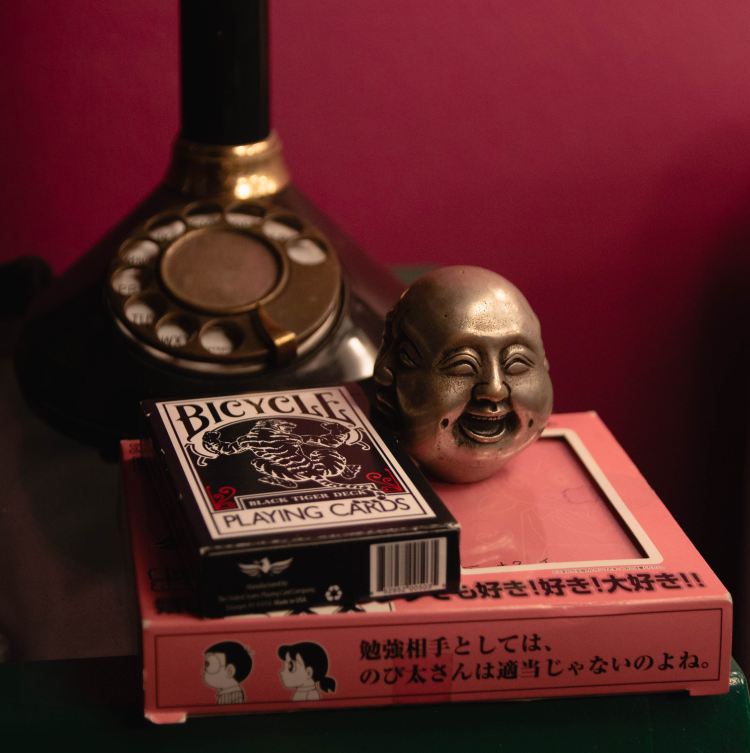Can You Do This to A Deck of cards? Aging Card Decks By Alex J. Coyne © 2019 Great Bridge Links Can you age a card deck instead of buying a vintage one? There are many reasons why you might want to, including adding authenticity to a themed game night. It’s a lot more fun than just buying a deck, and you can add a more personal touch to many decks. Buying Aged and Vintage Decided that you want to buy a reproduction or real vintage deck instead? Some of the best places to go offline include thrift stores, charity shops, flea markets and yard sales. When it comes to online buying, your options broaden a little – and you can find decks on Amazon, through eBay or through card retailers like PlayingCardDecks.com or VintagePlayingCards.co.uk. Of course, it’s considered sacrilege to artificially age anything that’s actually vintage for real, and you might destroy the value if you do. So, for the purpose of relic’ing or aging your decks, for the love of all things vintage, use newer ones as a base! Why Age a Card Deck? There are many reasons why you might want to age a card deck yourself instead of buying one. First, it offers a more personal touch – it can be compared to tearing jeans yourself rather than buying them pre-worn off the shelf. Second, even vintage reproduction decks often don’t reproduce the actual wear that you would get from heavy use – and for many …
Can you do this to a deck of cards?

Can You Do This to A Deck of cards? Aging Card Decks
By Alex J. Coyne © 2019 Great Bridge Links
Can you age a card deck instead of buying a vintage one? There are many reasons why you might want to, including adding authenticity to a themed game night. It’s a lot more fun than just buying a deck, and you can add a more personal touch to many decks.
Buying Aged and Vintage
Decided that you want to buy a reproduction or real vintage deck instead?
Some of the best places to go offline include thrift stores, charity shops, flea markets and yard sales. When it comes to online buying, your options broaden a little – and you can find decks on Amazon, through eBay or through card retailers like PlayingCardDecks.com or VintagePlayingCards.co.uk.
Of course, it’s considered sacrilege to artificially age anything that’s actually vintage for real, and you might destroy the value if you do. So, for the purpose of relic’ing or aging your decks, for the love of all things vintage, use newer ones as a base!
Why Age a Card Deck?
There are many reasons why you might want to age a card deck yourself instead of buying one. First, it offers a more personal touch – it can be compared to tearing jeans yourself rather than buying them pre-worn off the shelf. Second, even vintage reproduction decks often don’t reproduce the actual wear that you would get from heavy use – and for many games, you might want the authenticity of a deck that’s developed a real worn feel.
Whether it’s a theme poker night, a bridge game or a film prop, there’s always a use for a properly aged card deck. Many card magicians also prefer to age their cards first, or wear them to the point where they handle most comfortably.
Understanding Card Wear
If you want to wear cards in an authentic way, you’ll have to understand just how (and where) playing cards undergo most of their wear. Again, it can be compared to aging anything else – keyboards will wear in the areas where the keys are most often pressed: Just look down and you’ll often see what you’ve been typing the most.
Here’s a rundown of the areas in which you can expect a real card deck to wear over time and why.
- Sides: Naturally, the sides on a card deck wears over use – shuffling, holding, sliding in and out of the box and the natural oils that occur on the hands will all play a part in how it wears, and how fast. This can be simulated with very, very light sanding on the edges of the cards, and repeated bending and shuffling of the cards.
- Laminate: If you’ve ever seen a worn deck, you’ll notice that the laminate on the cards that used to be slippery and shiny is usually no longer. This rubs off over time, and can be done with repeated stressing of the cards’ surface: Put them down, and rub them against one another. Some people have achieved success with this, reportedly, by putting a deck of cards in a pillowcase and then in the drier. Again, light sanding can also simulate the same effect – but you’re looking for light wear and not scratching.
- Further Surface Wear: Further surface wear can often also affect card decks depending on the age and how much they were actually used; the conditions they were used in, like a house as opposed to a smokers’ basement will also affect how they wear. Tea is one way to add further artificial wear to the surface of a card deck – or, bury the cards individually in a patch of soil and wet it. Later, dig up the cards and dry them.
- Corners: The corners of an older card deck also wear with time, especially if they’ve gone through thousands of shuffles – and the way in which cards were shuffled will also inevitably affect this. Wearing the corners and bending ability of the deck is down to actually bending the deck in such a way that the paper “cracks” – it’s much like cracking the spine of a book.








